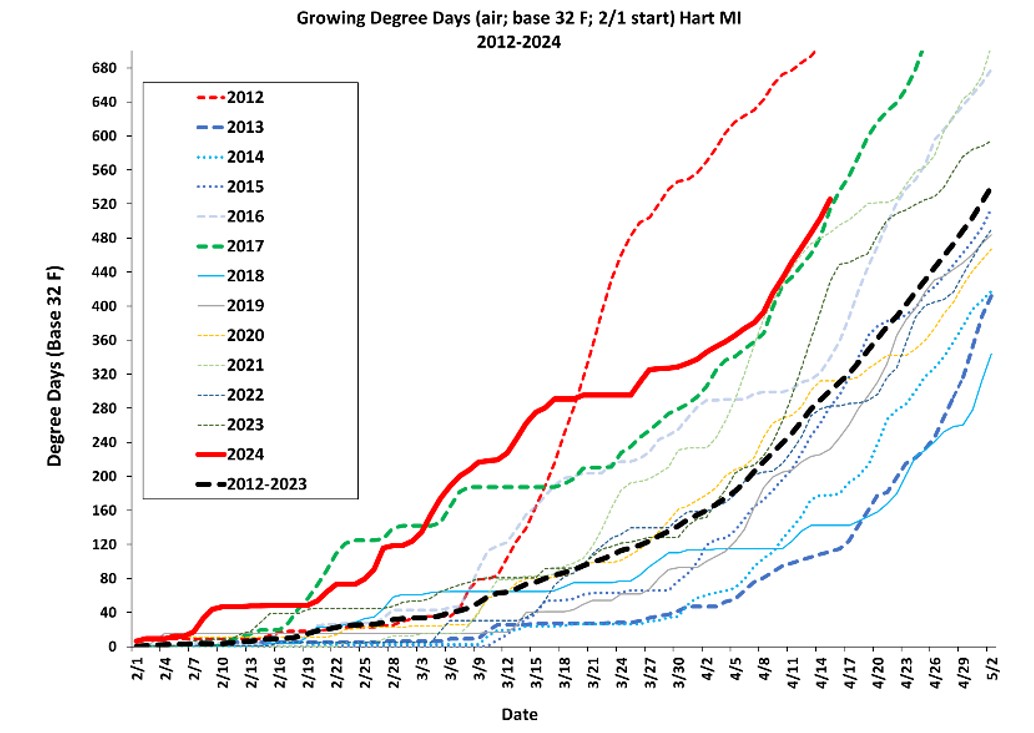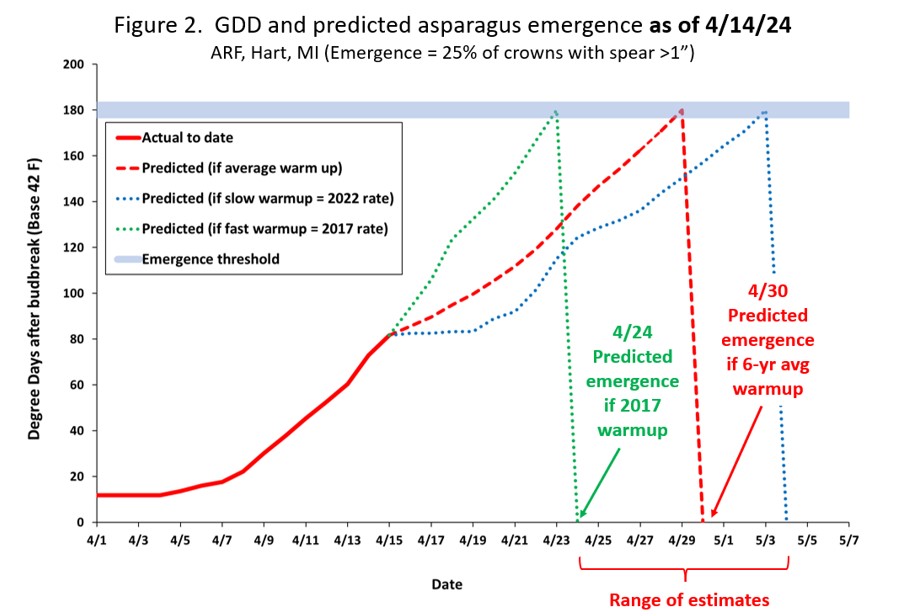Predicting asparagus emergence
The asparagus in Hart, Michigan, hit the snooze in late March but warm temperatures have likely rousted it from slumber, facilitating progress towards emergence.

For both growers and consumers of asparagus, the emergence of asparagus is an eagerly awaited sign of spring. Predicting emergence is a bit of a guessing game, but models based on growing degree days (GDD) can help. The spring came out of the gates fast this year, but we’re now on track for an only slightly earlier than usual asparagus harvest.
Is spring in the air?
This spring has been a bit unusual. If you look at growing degree days based on air temperature (Figure 1), you can see things heated up at record rates from mid-February to mid-March, but then cold weather put on the brakes. Many asparagus growers remember the spring of 2012 (red dotted line in Figure 1) when high temperatures in late March led to early asparagus emergence and catastrophic losses due to subsequent frost. This year (solid red line), we appeared to be headed in that direction, but now our spring warm-up looks more like 2017. So, spring may be earlier than last year, but not like in 2012.

For asparagus, spring is in the soil
Clearly, asparagus perceives spring differently than people and differently from many plants we see flowering in early spring, like Forsythia or daffodils. Since its crowns are below ground, soil temperatures are likely a better indicator for predicting asparagus emergence than air temperatures. Over the last five years, Michigan State University has been monitoring asparagus emergence in commercial fields and developing a growing degree day model based on soil temperature data from Michigan State University’s Enviroweather to help predict when asparagus is likely to emerge.
Our current model predicts asparagus emergence timing based on two steps: First, soil temperature data from 8 inches is used to predict when asparagus crowns have woken up from their winter slumber and the underground buds are primed and ready to begin growth. Second, soil temperature data from 4 inches is used to predict when spears emerging from buds will grow long enough to poke through the soil surface. This second step can take anywhere from a week to a month or more depending on soil temperatures.
What does our model tell us about asparagus emergence this spring?
Our model suggests that warm soil conditions in early March woke asparagus up earlier than usual but not much happened in the cooler days of late March. More recent, warmer temperatures have likely led to progress in emergence. In other words, the alarm clock went off early, asparagus hit the snooze button, but was rousted out of bed by recent warmer temperatures. What happens next depends on how quickly soil temperatures warm up over the next few weeks (Figure 2). Using average soil temperatures from the last six years, you can see that our model predicts asparagus emergence in Hart, Michigan, around April 30. However, if things warm up like they did in 2017 (fastest warmup in last six years), emergence is predicted to occur around April 24. On the other hand, if soil conditions follow the 2022 pattern (slowest warmup in last six years), then the first spears could be delayed until May 4.
Looking at the short to medium term forecast, it appears we are in for a typical roller coaster with alternating cooler and warmer periods. So stay tuned as spring reveals itself in the next few weeks.




 Print
Print Email
Email

